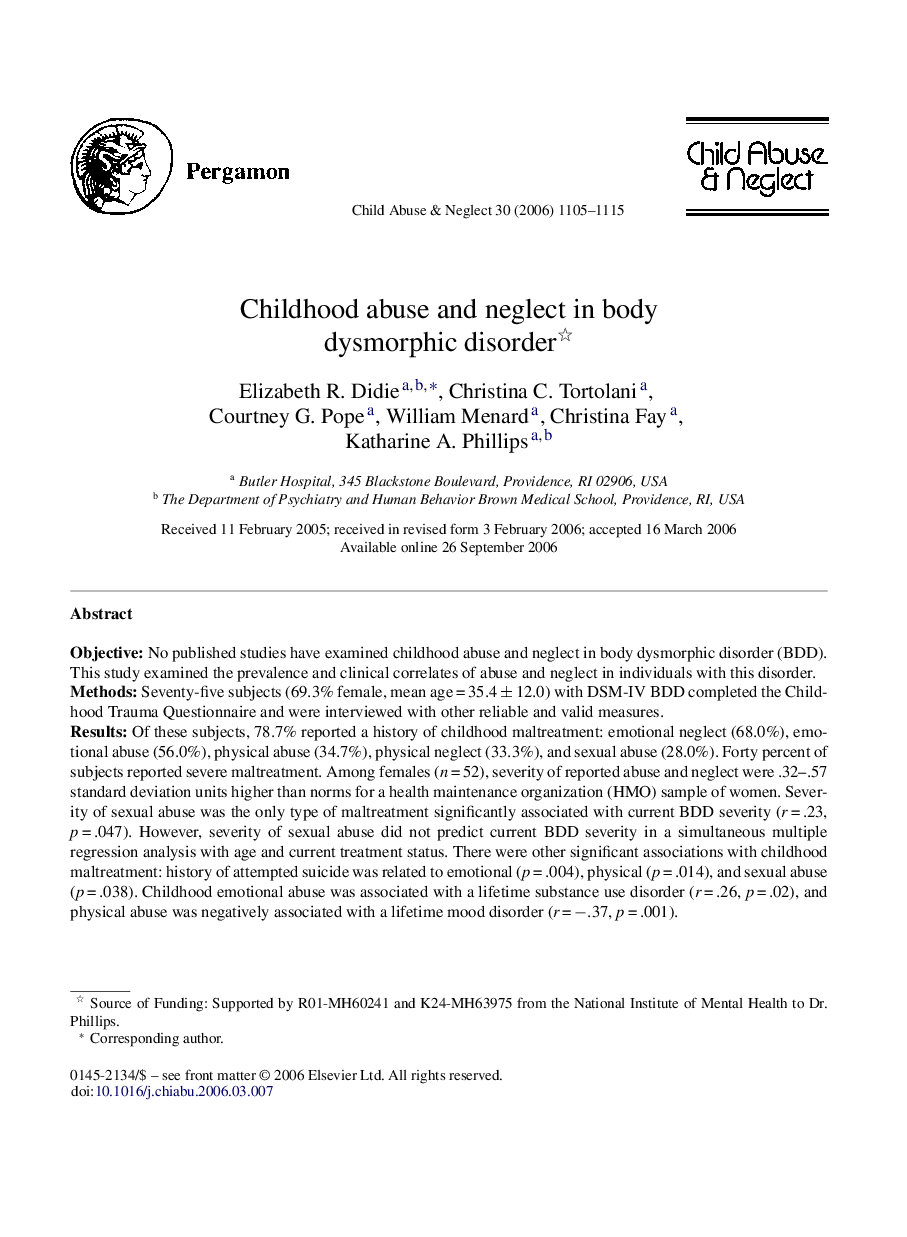| Article ID | Journal | Published Year | Pages | File Type |
|---|---|---|---|---|
| 345465 | Child Abuse & Neglect | 2006 | 11 Pages |
ObjectiveNo published studies have examined childhood abuse and neglect in body dysmorphic disorder (BDD). This study examined the prevalence and clinical correlates of abuse and neglect in individuals with this disorder.MethodsSeventy-five subjects (69.3% female, mean age = 35.4 ± 12.0) with DSM-IV BDD completed the Childhood Trauma Questionnaire and were interviewed with other reliable and valid measures.ResultsOf these subjects, 78.7% reported a history of childhood maltreatment: emotional neglect (68.0%), emotional abuse (56.0%), physical abuse (34.7%), physical neglect (33.3%), and sexual abuse (28.0%). Forty percent of subjects reported severe maltreatment. Among females (n = 52), severity of reported abuse and neglect were .32–.57 standard deviation units higher than norms for a health maintenance organization (HMO) sample of women. Severity of sexual abuse was the only type of maltreatment significantly associated with current BDD severity (r = .23, p = .047). However, severity of sexual abuse did not predict current BDD severity in a simultaneous multiple regression analysis with age and current treatment status. There were other significant associations with childhood maltreatment: history of attempted suicide was related to emotional (p = .004), physical (p = .014), and sexual abuse (p = .038). Childhood emotional abuse was associated with a lifetime substance use disorder (r = .26, p = .02), and physical abuse was negatively associated with a lifetime mood disorder (r = −.37, p = .001).ConclusionsA high proportion of individuals with BDD reported childhood abuse and neglect. Certain types of abuse and neglect appear modestly associated with BDD symptom severity and with gender, suicidality, and certain disorders.
